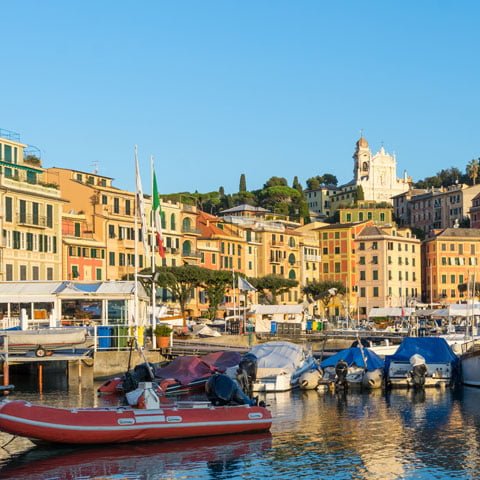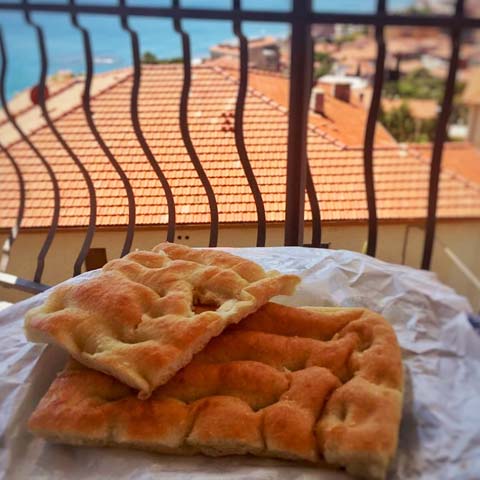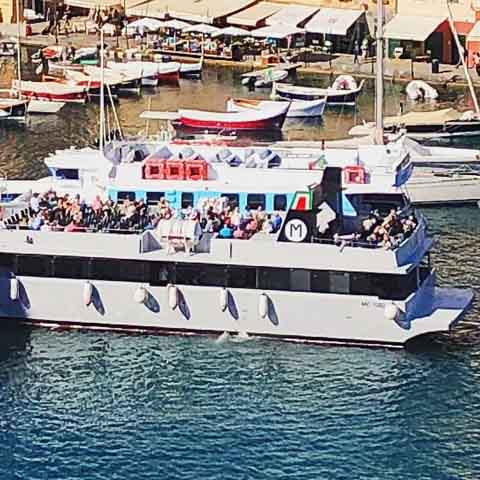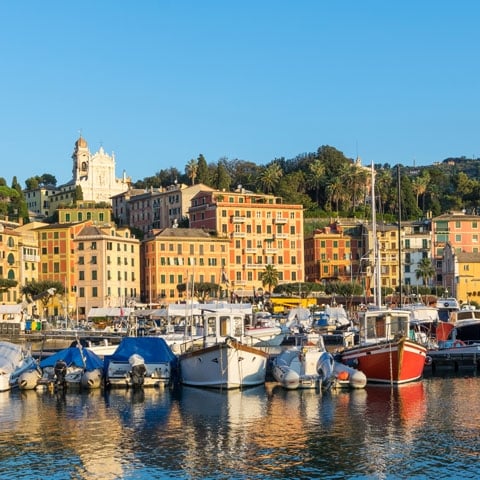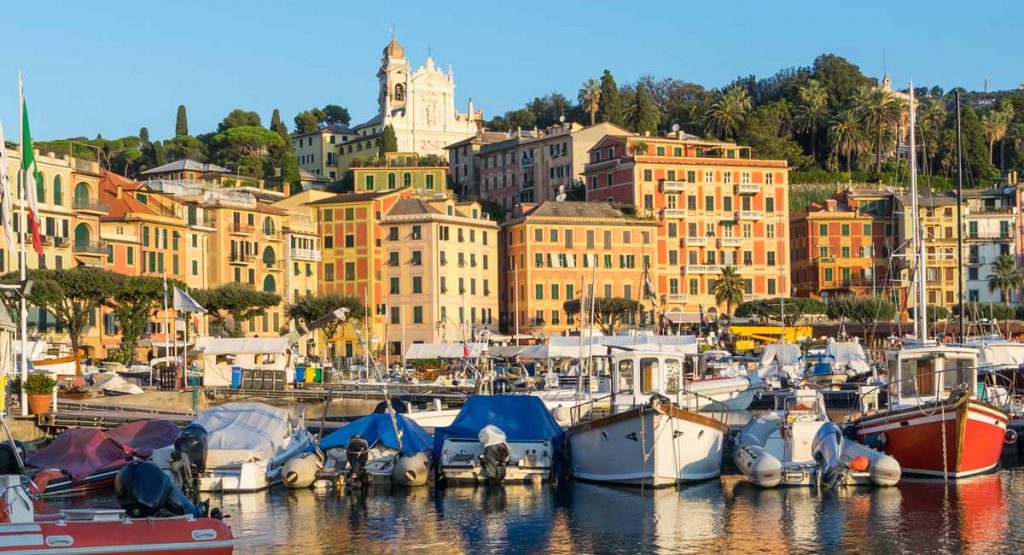A visit to Rapallo ensures travelers amazing views from the oceanside promenade. It promises delicious cuisine filled with characteristically Ligurian flavors and ingredients. It offers travelers the chance to explore the Italian Riviera in a more laid-back way than they could in other cities along the coast. But it also gives travelers a glimpse into the vast history and rich culture of the area.
The cultural traditions of Rapallo can be felt throughout the historic city center, where locals enjoy traditional food, the company of others, and casual conversation. The Roman influence of the city’s history can be seen in the architectural wonders located throughout Rapallo. The impact the city has had on the arts can be seen in the works of writers such as William Butler Yeats and Ezra Pound. Culture is abundant in Rapallo – from the sites to the food to the local festivals.
ART
While Rapallo has a small footprint, there are a couple of places throughout the city at which travelers can enjoy stunning works of art.
At the Gaffoglio Museum, one will find a variety of collections from the fourteenth to the twentieth centuries. From decorative art pieces made of gold, porcelain and other precious materials to rich paintings, the pieces are from Attilio Gaffoglio’s personal collection, which was curated over the course of 40 years. Just before his death, Gaffoglio donated around 300 pieces to the city of Rapallo, and upon his death in 2000 the town inherited the remainder of the collection. The museum displays the works in groups based on the material used to create them.
Travelers can also view artwork at the Church of San Michele Di Pagana, which was built during the eleventh century. It features the Anthony Van Dyck paintings Crucifix with Saint Francis, Saint Bernardo, and Francesco Orero.
Due to the gulf city’s beauty, Rapallo has, of course, been the subject matter for many artists on a variety of mediums, including painting and photography.
ARCHITECTURE
The history of Rapallo can be truly seen and felt when it comes to the city’s architecture.
The most significant icon of Rapallo is its castle. Built directly on a pier off the city’s oceanfront promenade, the Castello sul Mare dates to the early 1500s. In the past it acted as a medieval defense spot during pirate raids, and today it is used for local events and exhibitions. The symbol of the castle is used on a variety of souvenirs and is known as a signature of the resort town.
Another of the most important architectural aspects of Rapallo is the shrine known as Our Lady of Montallegro Sanctuary. The sanctuary sits atop a hill and can be reached by cable car in only seven minutes. It was built after a sighting of the Virgin Mary in the 1500s and was renovated in the nineteenth century.
The Church of Santo Stefano is another important church. Built in a Romanesque style, this church sits in the center of Rapallo’s historic city center. It was the first church built in the city – erected during the twelfth century – and, along with a few other buildings, formed the beginning of Medieval Rapallo.
Another important church is the Basilica of Santi Gervasio e Protasio. Dating back to the seventeenth and eighteenth centuries, the grand church features Neoclassical architecture. The church’s bell tower, which stands at nearly 220 feet, is believed to be the tallest of its kind in the Liguria region. The interior features remarkable sixteenth century frescoes, sculptures, and paintings.
Lovers of architecture can also explore the Monastery of Valle Christi – a collection of ruins from a monastery complex that dates to the early 1200s. What remains of the complex today are the apse and steeple of the church as well as a section of the cloister.
For even older ruins, head to the Hannibal Bridge, a single arch bridge that is believed to have been constructed during the third century BC. The stone bridge has been renovated many times over the centuries. Though the Boate River was diverted away from the bridge centuries ago, the Hannibal Bridge still stands as a testament to Rapallo’s ancient past.
Rapallo is also home to Punta Pagana Tower, one of the few remaining examples of Saracen towers. It features the original seventeenth century flooring and exteriors, which were restored. Another local tower is the Civic Tower, which dates back to the fifteenth century and has become a symbol of the city.
LITERATURE
The magic and beauty of Rapallo’s stunning landscape has been a source of inspiration for many of the world’s greatest authors and poets.
The city’s history, which is heavily rooted in literature, can be observed at the Città di Rapallo – Biblioteca Internazionale, a library located in a villa overlooking the gulf, which contains countless editions of books and periodicals, including English, German, Spanish, and French versions.
Some of the writers who found inspiration while in Rapallo include W.B. Yeats, Ezra Pound, and Max Beerbohm.
Yeats, an Irish poet, once described Rapallo’s coast as a “thin line of broken mother-of-pearl along the water’s edge.” He spent much time in town writing in his famed Rapallo Notebooks.
Max Beerbohm lived in Rapallo for over 40 years up until his death. He was a well-known English caricaturist and essay writer.
Ezra Pound, a famous American poet, lived in Rapallo for over 20 years after leaving Paris. The seaside resort was where he wrote much of The Cantos, an epic poem.
MUSIC
During the summer, Rapallo hosts the Rapallo Festival Il Palco sul Mare, an event that celebrates music. It features performances by musical artists from across Italy and beyond. The event lasts an entire week and includes intimate “jam sessions” as well as large-scale, full concert performances that are displayed on large screens for everyone to see.
Throughout the rest of the year, some of the local bars and restaurants along the Lungomare Vittorio Veneto host bands to play live music for the diners and passersby.
Rapallo was also the location where Jean Sibelius, a Finnish composer, began writing his Symphony No. 2.
CINEMA
Rapallo, like much of the Italian Riviera, has served as a natural setting for several Italian and international films over the years. Movies set or filmed in the Rapallo area include The Barefoot Contessa (1954), Racconti d’estate (1958), and L’uomo senza memoria (1974).
SCIENCE
Rapallo was the birthplace of Fortunio Liceti, a sixteenth and seventeenth century physician and philosopher. During his time teaching at the University of Padua, Liceti befriended Galileo Galilei and the two scientists exchanged numerous letters over the course of their friendship. Liceti is best known for his work contributing to the fields of medicine, astronomy, and gems.
Don't just see Italy, live it.
Your dream trip to Italy has never been closer
No more endlessly scrolling travel sites. Our travel experts will craft the perfect, one-of-a-kind trip just for you.

300+
DESTINATIONS
We offer more Italian destinations than any travel site. Do and see more with Trips 2 Italy.
1 (of a kind)
ITINERARIES
Because your dream trip to Italy should be designed for you, not for the masses.
100%
PEACE OF MIND
From flights and accommodations, to food and activities - we take care of every detail.
